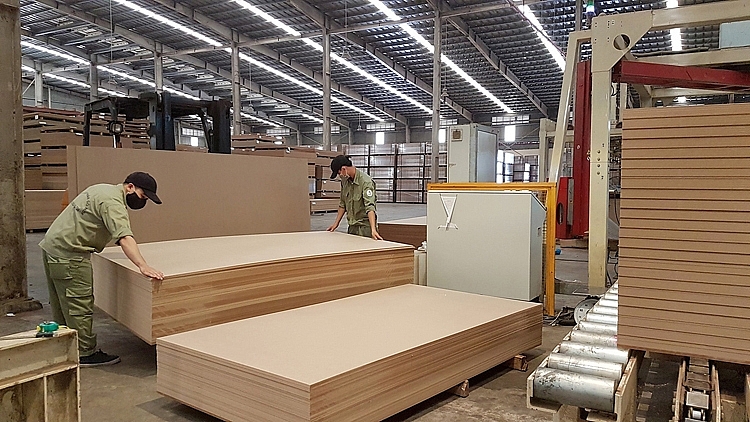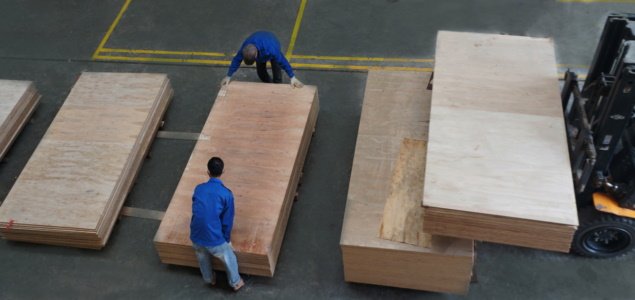In the context of a prolonged decline in demand from traditional markets, in addition to trade promotion activities of industry associations, many wood industry enterprises have actively expanded their business margins, penetrated potential new markets, contributing to solving immediate difficulties and gradually affirming the position for Vietnam’s wood industry in the high-end segment.
According to data from the Ministry of Agriculture and Rural Development, the export of wood and wood products in July 2023 reached nearly 1.1 billion USD; Cumulative export of wood and wood products in the first 7 months of the year reached 7.1 billion USD, 25% lower than the same period last year. However, the export turnover of July 2023 has risen to over 1 billion USD after a long period of deep decline, showing a signal that the export of wood and wood products has gradually recovered.
Mr. Nguyen Chanh Phuong, Vice Chairman of the Ho Chi Minh City Handicraft and Wood Processing Association, shared: In the first half of the year, the export of wood and wood products received negative numbers when the export turnover decreased by more than 28 % over the same period, shortage of orders is common in most businesses. However, from the end of the second quarter of 2023, orders have started to return, although not much, export growth next month is higher than the previous month by 3-7%. In particular, the most important export market is the US, which has made positive changes after a long period of deep decline.
Ms. Tran Nhu Trang, representative of SIPPO Program in Vietnam, analyzed that the major export markets of Vietnam’s wood industry such as the US, Europe, the UK, Japan, and South Korea… have shown signs of recovery as people Consumers began to return to shopping after a long time of tight spending. Notably, the US economy showed positive signs when inflation started to cool down, consumer confidence index increased. Americans begin to increase the activity of buying new houses as well as renovating houses, which will lead to the demand for interior and exterior shopping.
In addition, there are new potential markets for Vietnam’s wood industry such as the Middle East, India, Australia, Canada, and Asean. In particular, the Middle East is a region with very fast growth and cultural diversity; people here are willing to pay high prices to buy good quality products. Canada is also a market with a high level of spending on interior and exterior furniture as people move back to construction and home repair activities.
Information from the Vietnam Trade Office in the UAE said that the demand for furniture in the countries of the Gulf Cooperation Council (GCC) is very high, furniture imports have grown by more than 45% per year. when almost these countries do not produce furniture. In contrast, Vietnam is one of the 5 largest furniture exporting countries in the world, but only ranks 15th in the list of furniture suppliers for this region. In addition to the Middle East, other markets such as Australia, Canada, Japan, South Korea and India also have relatively good purchasing power and there is plenty of room for Vietnamese enterprises to boost exports.
Mr. Pham Phu Ngoc Trai, Chairman of the GIBC Global Integration and Business Consulting Company, commented: The fact that the current order reduction of the wood and furniture industry is only temporary. Vietnam’s furniture industry has enough room to develop in the next 5 to 10 years. Compared with the forecast of global average GDP growth at 3%, the compound growth rate of the world furniture industry is 4.5%. Vietnam’s wood processing industry has maintained its growth for many years at over 15% per year, and being in the top 5 largest wood furniture exporting countries in the world has proven the industry has solid internal resources.
While most businesses lack orders, D’Furni Company is still operating at full capacity and has just built more factories to meet the needs of customers. Mr. Vu Tien Thap, CEO of D’Furni Company shared: D’Furni is currently doing business in a different segment compared to other businesses in the wood and furniture industry in Vietnam, that is supplying to projects.
Accordingly, D’Furni only provides furniture according to the exact quantity for each project with separate design. For example, a hotel with 800 rooms, an office for 1,000 employees or a school with 5,000 students. These are orders with a small number of products, so the production operation will be quite difficult and not many factories choose this segment.
Explaining the above choice, Mr. Vu Tien Thap said that during the recent difficult period, while consumers cut spending, investors with a long-term vision still implemented projects. Export of products for the project is less affected. There are opportunities for project interiors in the near future such as the 2026 World Cup that will take place in North America, and hotels and restaurants in this area will simultaneously repair and renew to welcome tourists. . If used well, the ability of Vietnamese enterprises to participate in supplying to customers here is very great when China has just reopened and Chinese furniture and furniture is still being subject to 25% tax by the US.
Mr. Nguyen Quoc Khanh, Chairman of Ho Chi Minh City Handicraft and Woodworking Association. Ho Chi Minh said: Inflation, economic conflicts… caused almost all manufacturing and service industries to decline, not only the wood industry. However, facing that challenge, wood industry enterprises are not passive but proactive in adapting. On the one hand, enterprises reorganized the production apparatus and streamlined the model to reduce costs. On the other hand, try to take advantage of the support from trade promotion agencies to find new markets.





